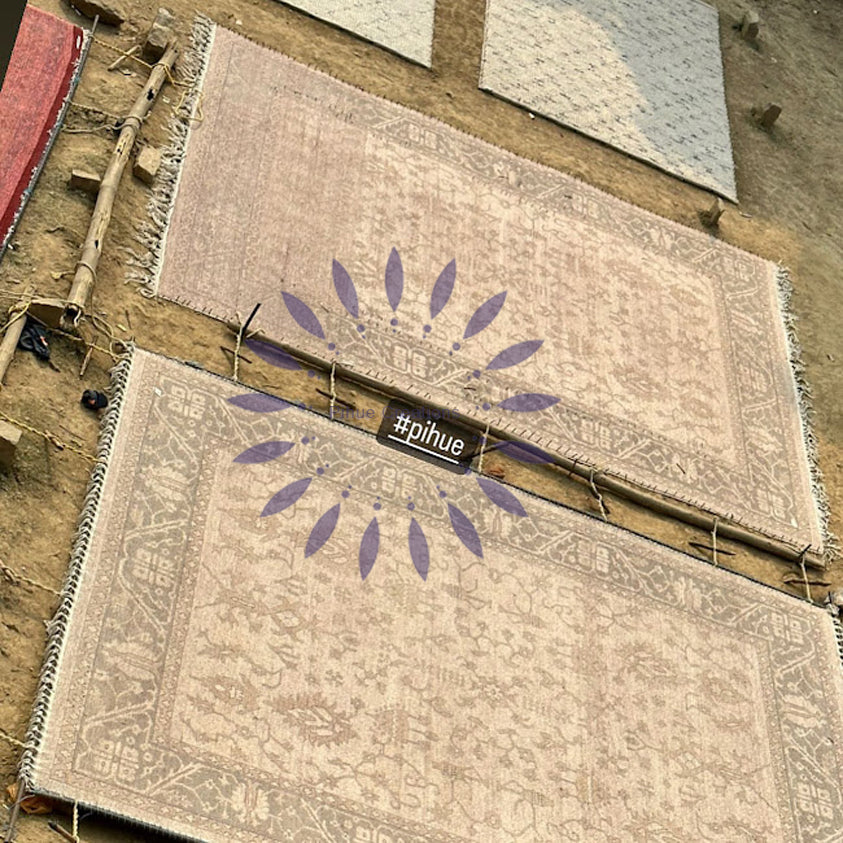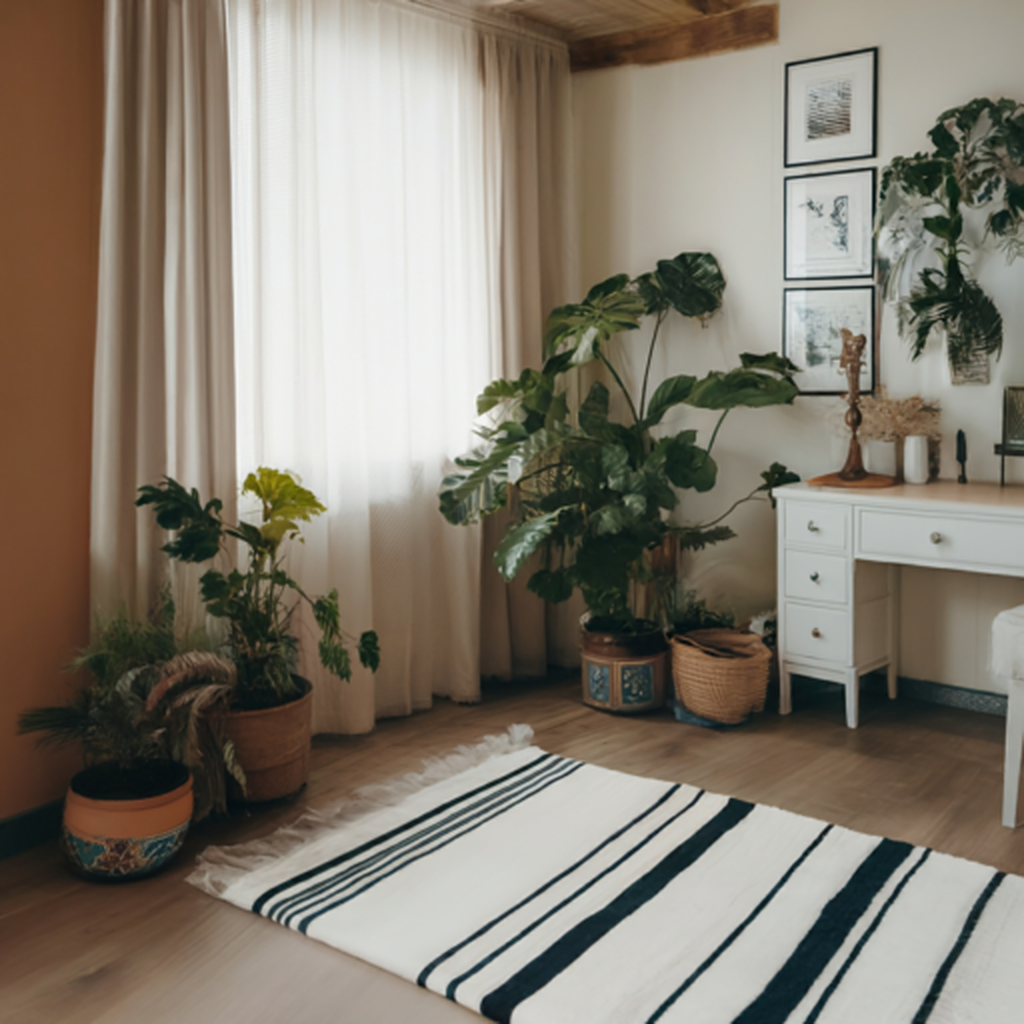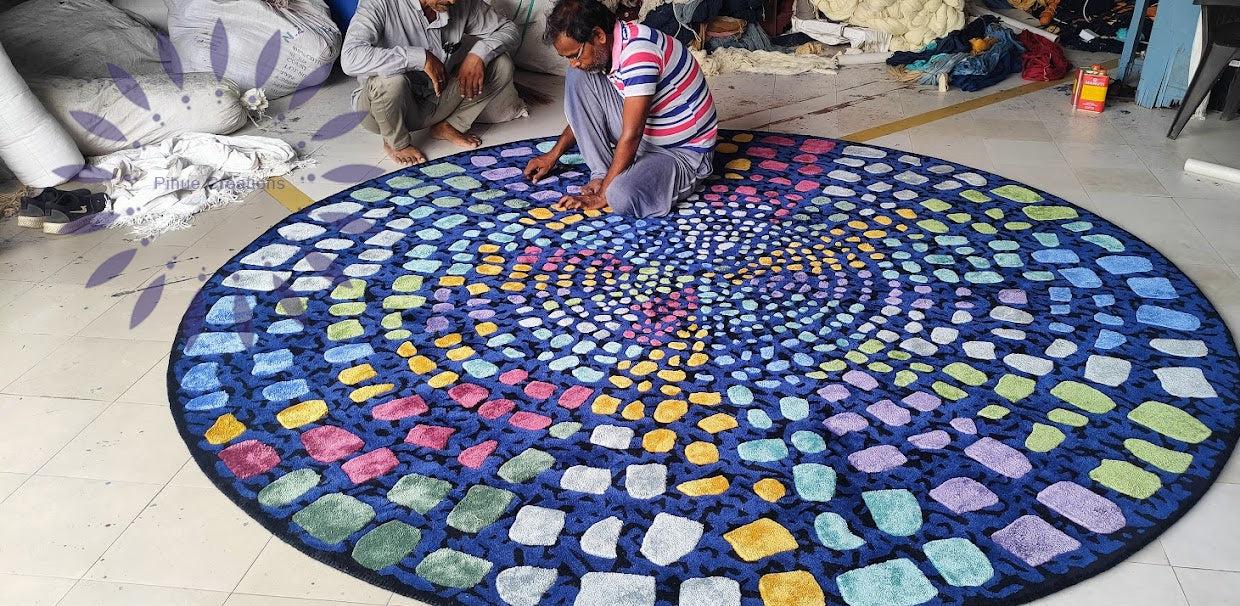- Home
- Designers & homeowners: source unique, high-quality rugs directly from Bhadohi artisans.
- Rugs in European Art: A Timeless Fusion of Craft and Culture

Rugs in European Art: A Timeless Fusion of Craft and Culture
Throughout history, rugs have held a place of prominence in European art, transcending their practical use as floor coverings to become symbols of wealth, status, and artistic expression. The intricate craftsmanship and exotic origins of rugs have fascinated European artists for centuries, leading to their depiction in some of the most famous works of art. From Renaissance masterpieces to Baroque opulence, rugs have not only embellished interiors but also carried stories of cultural exchange and artistic inspiration.
At www.artistrugs.com, we celebrate this timeless connection by offering rugs that reflect the craftsmanship and artistic heritage found in the masterpieces of European art. With a focus on hand-knotted rugs, sustainable craftsmanship, and artisan-made carpets, our collections bring the elegance and artistry of these woven masterpieces into modern homes.
The Renaissance Era: Rugs as Status Symbols
During the Renaissance, Europe saw an influx of exotic goods from the East, thanks to flourishing trade routes. Rugs from Persia, Turkey, and the Caucasus became highly coveted luxury items among the European elite. These intricately woven textiles were often used as table coverings rather than floor pieces, symbolizing wealth and power.
Artists such as Hans Holbein the Younger and Lorenzo Lotto captured these precious objects in their portraits. Holbein’s famous works frequently feature oriental rugs draped over tables, highlighting the status of the subjects he painted. These rugs, now known as "Holbein rugs," signified affluence and sophistication.
Lorenzo Lotto, an Italian painter, also depicted oriental rugs in his works, often placing them at the center of domestic interiors or beneath the feet of religious figures. These detailed renderings of rugs not only enhanced the beauty of the compositions but also showcased Europe’s fascination with Eastern craftsmanship.
Baroque Splendor: Rugs as Decorative Elements
By the Baroque period, the use of rugs in European art had evolved from symbols of wealth to essential elements in interior decoration. Artists like Peter Paul Rubens and Diego Velázquez painted grand scenes in which rugs were part of the luxurious decor. In these works, rugs complemented the opulence of the settings, harmonizing with extravagant costumes, furnishings, and architectural details.
In Rubens' large-scale paintings, the presence of oriental rugs amplified the sense of grandeur, with their vibrant colors and complex designs drawing attention. Velázquez, in his famous painting Las Meninas, included a rug as part of the scene to subtly underscore the elegance of the Spanish court. Rugs in these artworks became integral to the visual narrative, reflecting Europe’s artistic dialogue with the East.
Dutch Golden Age: A Focus on Texture and Detail
The Dutch Golden Age of the 17th century brought a new approach to the depiction of rugs in art. Artists like Johannes Vermeer and Pieter de Hooch were known for their detailed interiors, often including rugs as focal points in their compositions. These rugs, meticulously rendered with attention to texture and design, added richness to the domestic settings.
Vermeer’s The Music Lesson showcases a finely woven rug that adorns a table, its intricate patterns and soft folds contributing to the realism of the scene. Similarly, in de Hooch’s depictions of middle-class life, rugs signified the increasing wealth and cultural sophistication of Dutch society.
The Symbolism of Rugs in Religious and Mythological Art
In addition to their decorative role, rugs in European art also carried symbolic meanings, especially in religious and mythological contexts. Rugs were often placed at the feet of saints, kings, or gods in paintings to signify reverence, divinity, or the richness of the spiritual realm.
For instance, in Italian Renaissance altarpieces, oriental rugs frequently appeared beneath the feet of the Madonna or saints, symbolizing the wealth of the church and the sacredness of the space. In mythological scenes, rugs often signified the lavish lifestyle of gods or royal figures, connecting material wealth with divine favor.
The Influence of Orientalism in 19th-Century European Art
The 19th century saw the rise of Orientalism, a movement in which European artists were inspired by the cultures and aesthetics of the Middle East, North Africa, and Asia. This fascination extended to the depiction of rugs, which became central motifs in the works of Orientalist painters like Jean-Léon Gérôme and Eugène Delacroix.
In Gérôme’s detailed scenes of Middle Eastern life, rugs were often used to convey the exoticism and mystery of distant lands. His works, filled with rich textures and vibrant colors, brought the allure of Eastern craftsmanship to European audiences. Delacroix, similarly, used rugs to evoke the sensuality and richness of the Orient, weaving them into his dynamic and emotive compositions.
The Modern Era: Rugs as Artistic Inspiration
In the 20th century, rugs continued to inspire European artists, albeit in more abstract and conceptual forms. The patterns and textures of traditional rugs influenced modern art movements such as Cubism and Abstract Expressionism. Artists like Henri Matisse and Paul Klee drew inspiration from the geometric designs and vibrant colors of Eastern rugs, incorporating these elements into their avant-garde works.
Matisse, known for his love of textiles, often used rugs to create visual depth and warmth in his compositions. His vibrant color palette and bold patterns echoed the aesthetic qualities of traditional oriental rugs, transforming them into modern artistic expressions.
The Legacy of Art and Craft at Artist Rugs
The depiction of rugs in European art reflects the enduring appeal of these exquisite textiles, not only as objects of luxury but also as symbols of cultural exchange and artistic inspiration. At Artist Rugs, we honor this legacy by offering hand-knotted rugs, artisan-made carpets, and luxury floor coverings crafted with the same precision and care seen in historic works of art.
Our collections include traditional Indian designs as well as modern rug collections, bridging the gap between classic and contemporary styles. We are committed to sustainable craftsmanship, using natural fibers and heritage weaving techniques to create rugs that are not only beautiful but also environmentally responsible. Each rug is a work of art, designed to enhance your living space while preserving the rich tradition of rug-making.
Our custom rug designs allow you to bring a piece of history into your home, whether you're looking for a luxurious floor covering or a statement piece inspired by European art. Additionally, through our social impact initiatives, we support the communities and artisans who help bring these timeless creations to life.
Conclusion
From Renaissance portraits to modern abstraction, rugs have woven themselves into the fabric of European art history, leaving a legacy that continues to inspire artists and collectors alike. By exploring the connection between rugs and European art, www.artistrugs.com brings the same elegance and craftsmanship into homes today, ensuring that the legacy of these beautiful works of art lives on.
Let Artist Rugs be your gateway to timeless luxury and artistic heritage—where every rug tells a story of craftsmanship, culture, and elegance.








